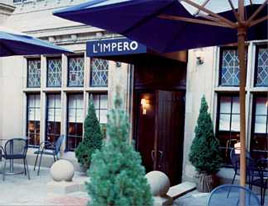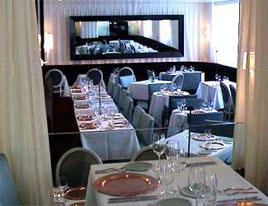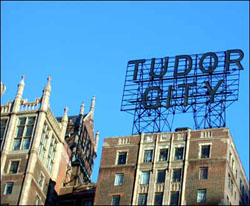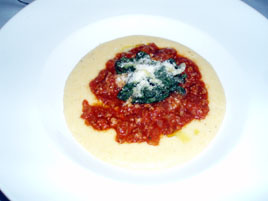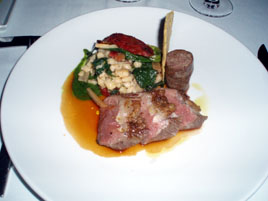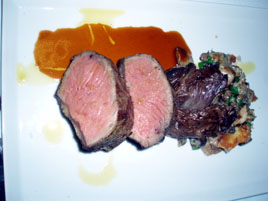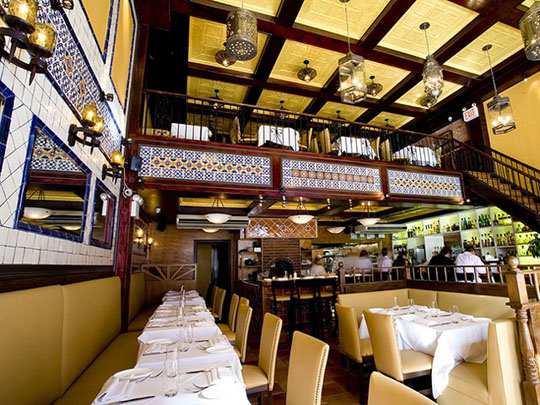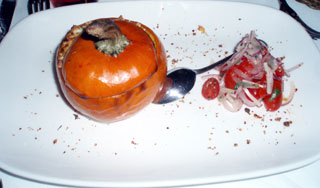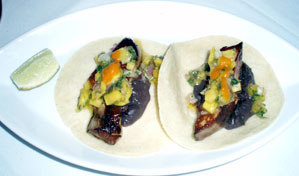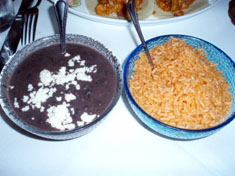
Kalina via Eater
I’m late to the party with a review of Soto, the new Sushi temple in Greenwich Village. Nearly all of the critics in town have already weighed in with the most enthusiastic reviews of the season so far. Ed Levine found it possibly “the best Japanese restaurant in New York” (though he admitted he’s not tried several of the major candidates), and Frank Bruni awarded a fairly enthusiastic two stars. Adam Platt was the only mildly dissenting voice, finding it “good but not fabulous.”


Soto’s menu of composed sushi plates (top) and cooked items (bottom)Sotohiro Kosugi served his inventive omakase for eleven years in an Atlanta strip mall, drawing a nationwide reputation before deciding to try his hand on New York’s grander stage. He engaged Hiromi Tsuruta (Momofuku, Jewel Bako) to design the space in a Sixth Avenue storefront so unassuming that you could quite easily walk right by without realizing it is a restaurant.
The menu, reprinted daily, has two pages of composed dishes, half of them from the sushi bar, the other half from the kitchen. They’re anywhere from $10–28, with most around $18–20. You won’t get out of Soto cheaply, as it takes at least four or five of these to make up a full meal.
The composed items vary quite a bit in size, and we were somewhat on our own to figure out how much to order. The back page of the menu has standard sushi pieces and rolls at standard prices, and I agree with Frank Bruni that these are competent, but unremarkable.
Levine reported an omakase, which ran $300 for two (tax and tip included), but when I visited last week, the menu stated that the restaurant “will be serving our Tasting course and Pre fixe [sic] menu in the future.” So we ordered à la carte, a mixture of the composed plates and standard sushi items.
Top marks go to uni ika sugomori zukuri, a sea urchin wrapped in thinly sliced squid and shiso, served with a quail egg and soy reduction. My colleagues and I agreed this was the dish of the evening, if not the dish of the century, though it is $24 and was gone after a few bites. We also loved salmon citrus, which offered cured fresh Scottish salmon on a scallion pancake in citrus sauce, but again, it was $18 for only a few bites. Among the hot dishes, tempura ($18) was light and delicate, and with six pieces one of the better values on the menu.
The standard sushi items were, as I have mentioned, unmemorable. However, the back page did offer a terrific Tuna Tartare roll ($16), made with asian pear, cucumber, avocado, sesame, and pine nuts, with a visually striking wrap of white kep.
Service was first-rate, with fresh plates delivered with every course, and all of the composed dishes were presented beautifully. However, those dishes are labor-intensive, and there were often long pauses between courses. The wine list, as you’d expect, has an ample selection of sakes, but oddly enough, just as many Western wines. We selected a sake, of course, and the server ensured our glasses stayed full—which served our purpose, as well as hers.
I found the space somewhat sterile, but it certainly didn’t matter once the food started grabbing our attention. I’d love to come back and explore more of the menu, but I must say that at these prices it will have to wait until I am in the mood to splurge.
Soto (357 Sixth Avenue between Washington Place and W. 4th Street, Greenwich Village)
Food: **½
Service: **½
Ambiance: *½
Overall: **½
 Wednesday, November 14, 2007 at 07:41AM
Wednesday, November 14, 2007 at 07:41AM  Harry Cipriani in
Harry Cipriani in  BruniBetting
BruniBetting 

